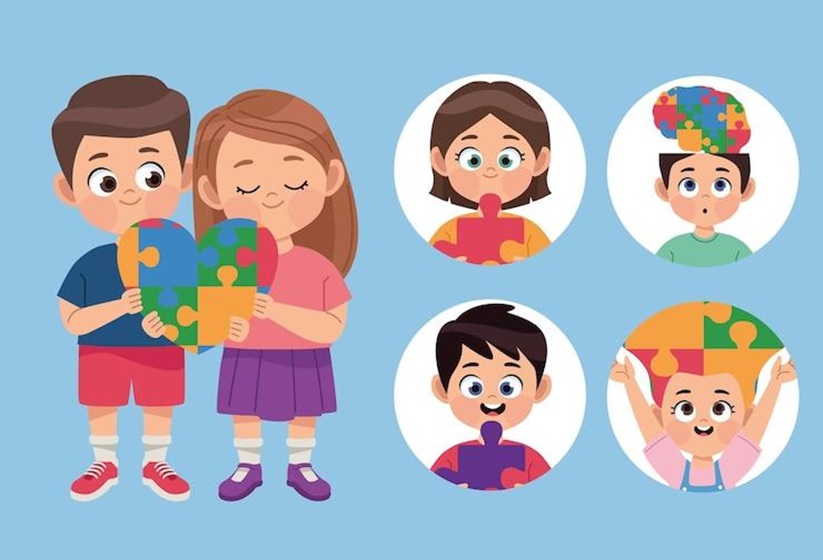Every child deserves the opportunity to reach their full potential. For children with autism spectrum disorder (ASD), Applied Behavior Analysis (ABA) programs have become a valuable tool in unlocking their abilities and fostering significant growth. In this article, we delve into the impact of ABA programs on children’s development and the building blocks they provide for a brighter future.
Understanding Applied Behavior Analysis (ABA)
Applied Behavior Analysis (ABA) is a scientific approach to understanding and modifying behavior. It is based on the principles of learning and behavior, and its goal is to increase positive behaviors and decrease challenging behaviors. ABA programs are designed to address the unique needs of individuals with ASD by breaking down complex skills into smaller, more manageable steps.
ABA therapists work closely with children, using evidence-based techniques to help them acquire essential skills across various domains. These skills include communication, socialization, and self-care. By providing structured and consistent interventions, ABA programs lay a solid foundation for future learning and development.
Decades of research support the effectiveness of ABA programs. Studies have consistently shown that ABA interventions can lead to significant improvements in communication, social skills, adaptive behaviors, and overall quality of life for children with ASD. These programs are not only effective in the short term but also have lasting impacts on the lives of children and their families.
The Role of ABA Programs in Children’s Growth and Development
ABA programs play a crucial role in the growth and development of children with ASD. These programs provide a structured and systematic approach to teaching new skills and reducing problem behaviors. By breaking down complex tasks into smaller, more manageable steps, ABA therapists help children build a foundation of skills that can be generalized to various settings and situations.
One key aspect of ABA programs is their focus on reinforcement. Positive behaviors are reinforced, while challenging behaviors are minimized through appropriate interventions. By providing consistent reinforcement and feedback, ABA programs help children develop new skills and maintain positive behaviors over time.
ABA programs also address each individual’s unique needs. Through careful assessment and observation, ABA therapists identify the specific areas where a child may need additional support. This individualized approach allows tailored interventions based on the child’s strengths and challenges.
Benefits of ABA Programs for Children with Autism Spectrum Disorder (ASD)
The benefits of ABA programs for children with ASD are vast. These programs provide a structured, supportive environment where children learn and grow independently. By breaking down complex skills into smaller steps, ABA programs make learning more manageable and less overwhelming for children with ASD.
One significant benefit of ABA programs is the improvement in communication skills. Many children with ASD struggle with verbal and nonverbal communication. ABA programs teach children how to communicate effectively through speech, sign language, or augmentative and alternative communication (AAC) devices. By providing targeted interventions, ABA programs help children develop their communication skills and improve their ability to express their wants, needs, and thoughts.
ABA programs also target social skills, which are often challenging for children with ASD. ABA therapists help children develop the skills necessary for successful social interactions through structured activities and social play. These skills include turn-taking, sharing, making eye contact, and understanding social cues. By teaching these skills systematically and structured, ABA programs empower children to engage with others and form meaningful connections.
ABA Techniques Used in Programs for Children with Developmental Delays
ABA programs utilize various techniques to teach new skills and reduce problem behaviors. These techniques are based on the principles of behavior analysis and are tailored to meet each child’s unique needs.
Discrete trial training (DTT) is commonly used in ABA programs. DTT involves breaking down complex skills into smaller, more manageable steps and teaching them systematically. ABA therapists provide clear instructions and prompt the child to respond. Correct responses are reinforced, while incorrect responses are corrected and retried. Through repeated practice, children learn new skills and develop mastery.
Another technique used in ABA programs is incidental teaching. Incidental teaching involves taking advantage of natural learning opportunities throughout the day. ABA therapists create situations where the child is motivated to communicate or engage in a specific behavior. Therapists provide prompts and reinforcement to help children learn new skills in a natural and meaningful context.
Other techniques used in ABA programs include visual supports, social stories, and video modeling. Visual supports, such as schedules and visual cues, help children understand and follow routines. Social stories provide narratives that help children understand social situations and appropriate behaviors. Video modeling involves watching videos of desired behaviors and imitating them.
The Importance of Individualized ABA Programs
Individualization is a key aspect of ABA programs. Each child with ASD has unique strengths, challenges, and learning styles. ABA therapists conduct thorough assessments to identify the specific areas where a child may need additional support. These assessments create individualized intervention plans to address the child’s particular needs and goals.
Individualized ABA programs ensure that interventions are tailored to the child’s abilities and preferences. This personalized approach increases the effectiveness of the interventions and promotes greater engagement and motivation. ABA therapists continuously monitor and adjust the program based on the child’s progress, ensuring that interventions are always relevant and meaningful.
By providing individualized interventions, ABA programs empower children with ASD to develop their skills and reach their full potential. These programs recognize that every child is unique and that their needs must be met in a way that respects their individuality.
Implementing ABA Programs at Home and in School Settings
ABA programs can be seamlessly implemented in home and school settings, ensuring children receive consistent support across environments. This collaboration between parents, ABA therapists, and educators is vital to the success of ABA interventions.
Parents can play a vital role at home by incorporating ABA strategies into daily routines. Using visual supports, creating structured schedules, and offering opportunities to practice new skills are all effective ways to apply ABA principles at home. By doing so, parents reinforce the progress made during therapy sessions and help generalize the skills to real-world situations. The integration of ABA strategies into everyday activities strengthens skill retention and encourages the development of positive behaviors in diverse settings.
In school, the partnership between ABA therapists and educators is crucial for addressing the unique needs of children with ASD. ABA therapists work closely with teachers to develop individualized education plans (IEPs) tailored to each student’s challenges and goals. These plans incorporate ABA techniques, ensuring students receive the necessary support in their educational journey. Additionally, ABA Classroom Management Systems emphasizes the importance of providing teachers with the proper training and resources to implement ABA strategies in classrooms effectively. This ensures a consistent and supportive learning environment, allowing children to thrive academically and socially.
By fostering collaboration between home and school environments, ABA programs create a cohesive approach to supporting children’s learning and development.
Choosing the Right ABA Program for Your Child
When choosing an ABA program for your child, several factors must be considered. The first step is to ensure that the program is delivered by qualified and experienced ABA therapists. Look for programs that have certified and licensed professionals who are experts in working with children with ASD.
It’s also important to consider the program’s individualized approach. ABA programs should be tailored to meet your child’s unique needs. Look for programs that conduct thorough assessments and develop personalized intervention plans based on your child’s strengths and challenges.
Additionally, consider the program’s track record and success stories. Look for testimonials and case studies that showcase the program’s effectiveness in helping children with ASD achieve meaningful progress. A reputable ABA program will have a history of success and positive outcomes.
Finally, consider the program’s cost and insurance coverage. ABA programs can vary in cost, and it’s important to understand what is included in the program and whether it is covered by insurance. Many insurance providers now cover ABA therapy for children with ASD, but it’s essential to verify coverage and understand any limitations or requirements.
Conclusion: The Lasting Impact of ABA Programs on Children’s Lives
ABA programs have revolutionized the way we approach the growth and development of children with autism spectrum disorder. Through evidence-based practices and individualized interventions, ABA programs provide children with the building blocks they need to reach their full potential.
ABA programs make learning more accessible for children with ASD by breaking down complex skills into smaller, manageable steps. These programs focus on reinforcing positive behaviors and reducing challenging behaviors, helping children develop essential skills across various domains.
The impact of ABA programs on children’s lives is significant and lasting. Research consistently shows improvements in communication, social skills, and adaptive behaviors for children who receive ABA interventions. By providing personalized and structured interventions, ABA programs empower children with ASD to navigate their world with greater confidence and autonomy.
As we continue to invest in ABA programs and expand access to these evidence-based interventions, we pave the way for a brighter future for individuals on the autism spectrum. By providing the necessary support and resources, we can unlock the potential of every child and ensure that they have the opportunity to thrive and succeed.





